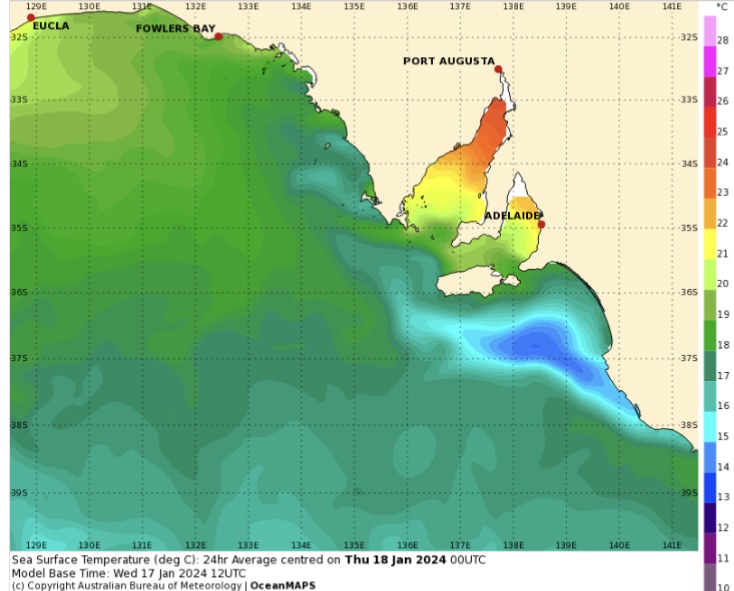
Every year, in the last days of December right through until as late as May – a mysterious, unique and regular occurrence features off of our local coast.
What is the Bonney Upwelling?
Bonney Upwelling begins as a system of November south-easterly winds, carrying cold Antarctic waters into the Southern Ocean. Once these deep sea waters reach the continental shelf, they are propelled vertically, surfacing 50km from the beach of Cape Jaffa (9km from our vineyard) and as far south as Portland, Victoria.
The coastal waters drop to 14-15 degrees Celsius – the coldest in Australia during this period. To the eye, the beach becomes a glowing, murky-green colour. This is because the cold water that arrives brings rich nutrients to the sea surface, encouraging high productivity & ecological activity for many plants and animals. At the height of fishing season, the local lobster become dormant. Whilst the waters become abundant in blue whales, penguins and fur seals as they come to feed on the abundant bait fish.
What does it mean for our wines?
For the vineyards of our local area, it brings a stable, reliable pattern of cool evening sea breezes at the height of ripening season. It allows open canopies to let maximum sunlight onto the berries, without fear of sunburn or overripening. Slow ripening and generous sunshine enables fruit to express wonderful levels of natural acid retention, while developing incredible colour and finely tuned natural tannin.
There are some local theories that the cool water deters the summer lightning storms, and the warm, soaking rain that comes with it. This possibly answers the frequently low summer rainfall along our coast, whilst regions 100km inland measure much higher volumes during these patterns. This consistency ensures disease pressure is significantly reduced in our Mt Benson vines.
For the cold morning swims it may bring, we say long live the Bonney Upwelling!
